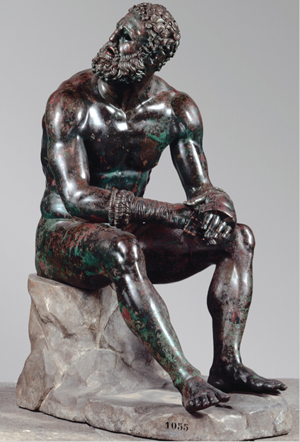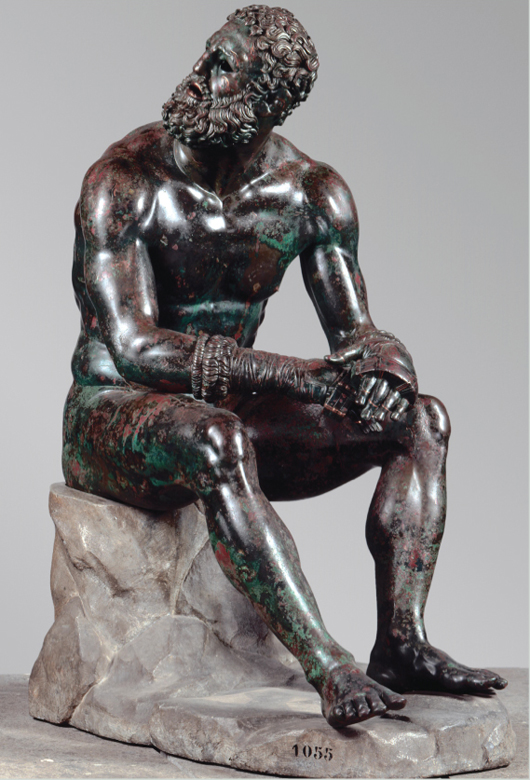
NEW YORK – The monumental bronze statue Boxer at Rest, an exceptionally realistic ancient Greek sculpture created between the late fourth and the second century B.C., is on display outside Europe for the first time at the Metropolitan Museum of Art. On loan from the Museo Nazionale Romano – Palazzo Massimo alle Terme, this extraordinary work is on view through July 15.
The exhibition, “The Boxer: An Ancient Masterpiece,” is part of 2013 – Year of Italian Culture in the United States, an initiative held under the auspices of the president of the Italian Republic, organized by the Ministry of Foreign Affairs and the Embassy of Italy in Washington, D.C.
The statue was excavated in Rome in 1885 on the south slope of the Quirinal Hill near the ancient Baths of Constantine, where it is thought to have been displayed. The sculpture was buried intentionally in late antiquity, possibly to preserve it against the barbarian invasions that ravaged Rome in the fifth century. The broad-shouldered, lanky pugilist is shown seated, resting after a match. His gloves—which are highly detailed—identify him as a boxer.
The athlete’s head wounds are consistent with ancient boxing techniques, in which the head was the main target. The copper inlays, indicating blood, heighten the effect. The boxer’s right eye is swollen, his nose is broken, and he breathes through his mouth, probably because his nostrils are blocked by blood. His scarred lips are sunken, suggesting missing teeth. The ears, swollen from blows, indicate possible hearing loss. Drops of blood from the wounds on his head have trickled down his right arm and leg. Wear on the foot and hands suggests that they were touched frequently in antiquity, possibly in veneration.
Because the iconography is related to statues of Herakles sculpted by Lysippos in the fourth century B.C., the Boxer at Rest may have been meant to celebrate a mythical, or real, boxer, who was glorified for his endurance and courage. Scholars have long debated the date of the statue, placing it anywhere from the middle of the fourth century B.C. to the middle of the first century B.C. The sculpture is an exceptional work in bronze from the Hellenistic period (323–31 B.C.) and is of outstanding artistry.
The exhibition is featured on the Metropolitan Museum’s website (www.metmuseum.org).
ADDITIONAL IMAGE OF NOTE


